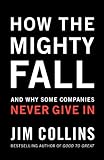GM's core rigidities
One of the most interesting and most cited innovation articles of the 1990’s was a paper by Dorothy Leonard (then Dorothy Leonard-Barton) about how core capabilities become what she dubbed “core rigidities.” In 25 words or less, if you get really good at doing something, you’ll keep doing it long past when it’s become obsolete.
This week in the FT, Don Sull (the equivalent of a clinical professor at London Business School) wrote about GM’s rigidities without citing Leonard’s work. The key paragraphs stating his thesis:
That pride cometh before the fall and overreach triggers decline seem self-evident. In complex phenomena, however, the underlying causes are rarely obvious, and the obvious answer is often wrong. So it is here.
Organisations fail not because they stray from their core, but because they stick to it too closely as circumstances shift. Hubris and overreach play their role, but typically as supporting players not the stars.
 Instead, Sull writes frames his discussion of the context of Jim Collins’ brand new book, How the Mighty Fall. As syndicated into Business Week, Collins outlines five stages from success to failure.
Instead, Sull writes frames his discussion of the context of Jim Collins’ brand new book, How the Mighty Fall. As syndicated into Business Week, Collins outlines five stages from success to failure.- Hubris born of success
- Undisciplined pursuit of more
- Denial of risk and peril
- Grasping for salvation
- Capitulation to irrelevance or death
All three papers are worth reading for people who work in big, once successful companies — or are inclined to invest in one. If you believe Collins, the problems won’t be obvious until too late.
Of course, Andy Grove saw this coming more than a decade ago, which is why he instituted the motto that “only the paranoid survive.” The only problem I have is that paranoia only suggests where to avoid to also avoid complacency; it doesn’t say where to go to achieve those new breakthroughs.

![[feed]](http://photos1.blogger.com/x/blogger2/6971/993546936938810/1600/z/962294/gse_multipart3851.gif)

No comments:
Post a Comment